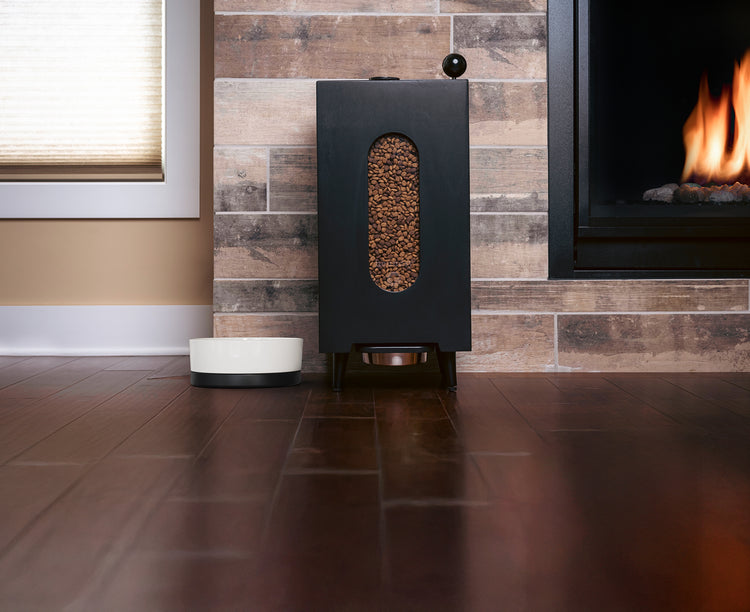What's a Good Recipe for Homemade Dog Food? A Comprehensive Guide
- Houndsy
Table of Contents
- Introduction
- The Benefits of Homemade Dog Food
- Nutritional Requirements for Dogs
- A Step-by-Step Recipe for Homemade Dog Food
- Tips for Transitioning Your Dog to a Homemade Diet
- FAQ Section
- Conclusion
Introduction
Did you know that nearly 60% of dogs in the United States are considered overweight or obese? This startling statistic highlights the importance of not only what we feed our furry friends but also the quality of those ingredients. As pet owners, we want the best for our dogs, and many of us are beginning to question the contents of commercial dog foods. With growing awareness of the potential health risks associated with processed pet food, a homemade diet has become increasingly popular.
In this blog post, we will explore the topic of homemade dog food, specifically focusing on what's a good recipe for homemade dog food. Our aim is to provide a comprehensive guide that will not only share a delicious recipe but also discuss the nutritional needs of dogs, how to transition them to homemade food, and the benefits of making this culinary switch. By the end of this post, we hope you'll feel inspired and empowered to create nutritious meals for your beloved pet.
Are you ready to elevate your dog's mealtime experience? Let's dive in!
The Benefits of Homemade Dog Food
Choosing to prepare homemade meals for our dogs comes with a multitude of benefits that can enhance their health and well-being. Here are just a few of the advantages:
1. Control Over Ingredients
When we cook for our pets, we have complete control over the ingredients that go into their meals. This means we can choose high-quality, fresh, human-grade ingredients that are free from artificial preservatives, fillers, and by-products.
2. Tailored Nutrition
Every dog has unique dietary needs based on their age, breed, size, and health conditions. By making homemade dog food, we can tailor recipes to suit our dog's specific requirements, ensuring they get the right balance of nutrients.
3. Improved Digestibility
Many commercial dog foods contain fillers that can be hard for dogs to digest. Fresh, whole ingredients are easier on their digestive systems and can lead to better nutrient absorption.
4. Enhanced Flavor and Palatability
Dogs are more likely to eat and enjoy their food when it's freshly prepared, as opposed to dry kibble or canned options. Homemade meals can lead to happier, healthier dogs with improved appetites.
5. Strengthened Bond
Cooking for our pets can deepen the bond we share with them. The act of preparing their meals shows our love and commitment to their well-being.
Nutritional Requirements for Dogs
Before we dive into the recipe, let's discuss the essential nutrients that dogs need to stay healthy. A balanced homemade diet should ideally include:
- Proteins: Vital for growth, maintenance, and energy. Common protein sources include lean meats (chicken, turkey, beef), fish, and eggs.
- Carbohydrates: Provide energy and aid digestion. Options include brown rice, quinoa, and sweet potatoes.
- Fats: Essential for skin and coat health, as well as overall energy. Healthy fats can come from fish oil, flaxseed oil, and chicken fat.
- Vitamins and Minerals: Crucial for bodily functions, vitamins can be obtained from a variety of vegetables and fruits. Additionally, a calcium supplement may be needed for bone health.
- Fiber: Supports digestive health and can be found in vegetables and grains.
A Step-by-Step Recipe for Homemade Dog Food
Now that we've established the benefits and nutritional requirements, let's get to the good stuff! Here’s a simple yet nutritious recipe for homemade dog food that your furry friend will love.
Ingredients
- 2 pounds of lean ground turkey or chicken
- 1 cup of brown rice (uncooked)
- 4 cups of water
- 1 cup of carrots, shredded
- 1 cup of peas (fresh or frozen)
- 1/2 cup of pumpkin puree (not pie filling)
- A drizzle of olive oil (for healthy fats)
- Optional: A calcium supplement or crushed eggshells for added calcium
Instructions
-
Cook the Protein: In a large pot, cook the ground turkey or chicken over medium heat until fully cooked. Make sure to break it into small pieces while cooking.
-
Add Water and Rice: Once the meat is cooked, add water and brown rice to the pot. Bring it to a boil, then reduce the heat to low and cover. Let it simmer for about 20–25 minutes, or until the rice is fully cooked.
-
Mix in the Vegetables: After the rice is cooked, stir in the shredded carrots and peas. You can also add in the pumpkin puree at this stage. Cook for another 5 minutes until the vegetables are tender.
-
Cool and Serve: Let the mixture cool completely before serving it to your dog. You can portion it out for meals or store it in an airtight container in the refrigerator for up to 4 days. It can also be frozen for longer storage.
-
Serve and Enjoy: When it’s time to feed your dog, simply scoop out the desired portion and serve! If you wish, you can drizzle a little olive oil on top for added flavor and healthy fats.
Tips for Transitioning Your Dog to a Homemade Diet
Transitioning your dog from commercial food to homemade meals requires patience and care. Here are some tips to ensure a smooth transition:
1. Gradual Introduction
Start by mixing the homemade food with your dog's current food, gradually increasing the proportion of homemade meals while decreasing the commercial food over a week or two. This slow transition helps to minimize digestive upset.
2. Monitor Your Dog's Reaction
Keep an eye on your dog's stool consistency, energy levels, and overall health during the transition. If you notice any signs of digestive distress, slow down the transition and give them time to adjust.
3. Consult Your Vet
Before making any significant changes to your dog's diet, it's always a good idea to consult with your veterinarian. They can provide personalized recommendations based on your dog's specific health needs.
4. Use Nutritional Supplements
Consider adding a high-quality vitamin and mineral supplement to ensure your dog is getting all essential nutrients. Products like Dog Greens can be a great addition to homemade meals.
5. Stay Informed
Research various ingredients and recipes, and always keep learning about your dog's nutritional needs. Each dog is unique, and what works for one may not work for another.
FAQ Section
1. Is homemade dog food better than commercial dog food?
Many pet owners believe that homemade dog food is healthier because it allows for better control over ingredients and the avoidance of fillers and preservatives found in some commercial dog foods. However, it’s essential to ensure that homemade meals are nutritionally balanced.
2. How much homemade food should I feed my dog?
A general guideline is to feed about 1 cup of food for every 10 pounds of your dog's weight per day. This can be adjusted based on your dog's activity level, age, and health conditions.
3. Can I use leftovers from my meals for my dog's homemade food?
While it’s tempting to use leftovers, be cautious about what you include. Avoid any food that is toxic to dogs, such as onions, garlic, chocolate, grapes, and certain spices. Stick to wholesome, dog-safe ingredients.
4. How long can I store homemade dog food?
Homemade dog food can be stored in the refrigerator for up to 4 days. It can also be frozen in portions for up to 3 months. Be sure to thaw it completely before serving.
5. Should I add supplements to homemade dog food?
Yes, it's advisable to add a high-quality vitamin and mineral supplement to ensure your dog receives all essential nutrients, especially if you are not including certain ingredients like organ meats in their diet.
Conclusion
Transitioning to a homemade dog food diet can be one of the best decisions you make for your furry friend. Not only does it provide better control over the ingredients, but it also ensures that your dog receives the nutrition they need to thrive. By following the recipe and tips provided in this guide, we can feel confident in giving our dogs the loving, nourishing meals they deserve.
If you're interested in elevating your dog feeding experience even further, consider exploring the Houndsy Kibble Dispenser for a convenient and stylish feeding solution. Check it out here and don't forget to browse our Accessories collection for other pet care essentials here.
Are you ready to whip up some homemade goodness for your dog? We can’t wait to hear how your furry friends enjoy these delicious meals! Happy cooking!












